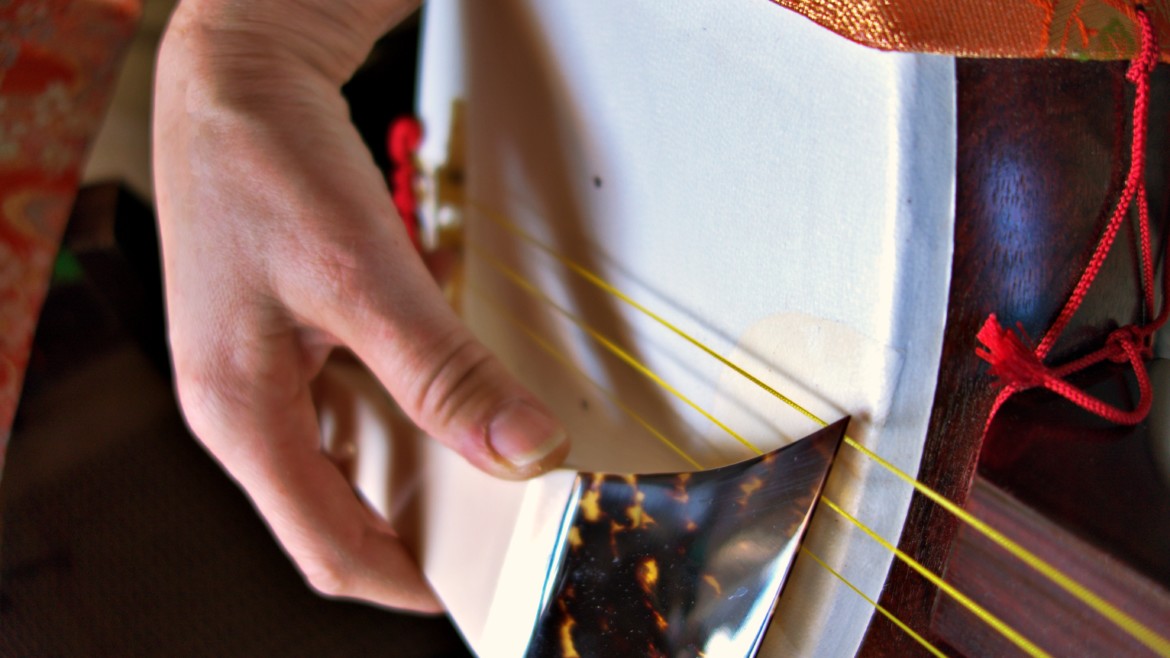The Tsugaru shamisen is an instrument closely tied to the performing arts within Japan’s traditional music. Its history was molded by the creative activities of blind traveling performers.
While the Tsugaru shamisen has a structure almost identical to the shamisen that was introduced to Japan around the 16th century, it underwent changes adapting to the harsh natural environment and lifestyles of the Tsugaru region. The neck became thicker and larger, and the plectrum became more compact. These changes were made to produce louder sounds and to cater to more intricate rapid-fire playing techniques.
Many Tsugaru shamisen performers were blind artists, including goze (blind women) and zato (blind men). They traveled from village to village during agricultural off-seasons, performing music and sharing stories as a means of livelihood. They also competed with one another in their musical skills, further developing the techniques of Tsugaru shamisen.
In the post-war folk music boom, the Tsugaru shamisen gained significant popularity as a form of popular entertainment. What was simply referred to as “Tsugaru mono” was promoted nationally as “Tsugaru shamisen” by renowned folk singers like Michiya Mihashi. In particular, the song “Tsugaru Jongara-bushi” became known as a signature piece for the Tsugaru shamisen, and was taken up by numerous folk singers and performers.
The Tsugaru shamisen started receiving attention not only as a form of popular entertainment but also as a new traditional art. Nowadays, artists playing the Tsugaru shamisen have diversified, venturing into not just traditional arts but also genres like rock and pop.



Leave a review